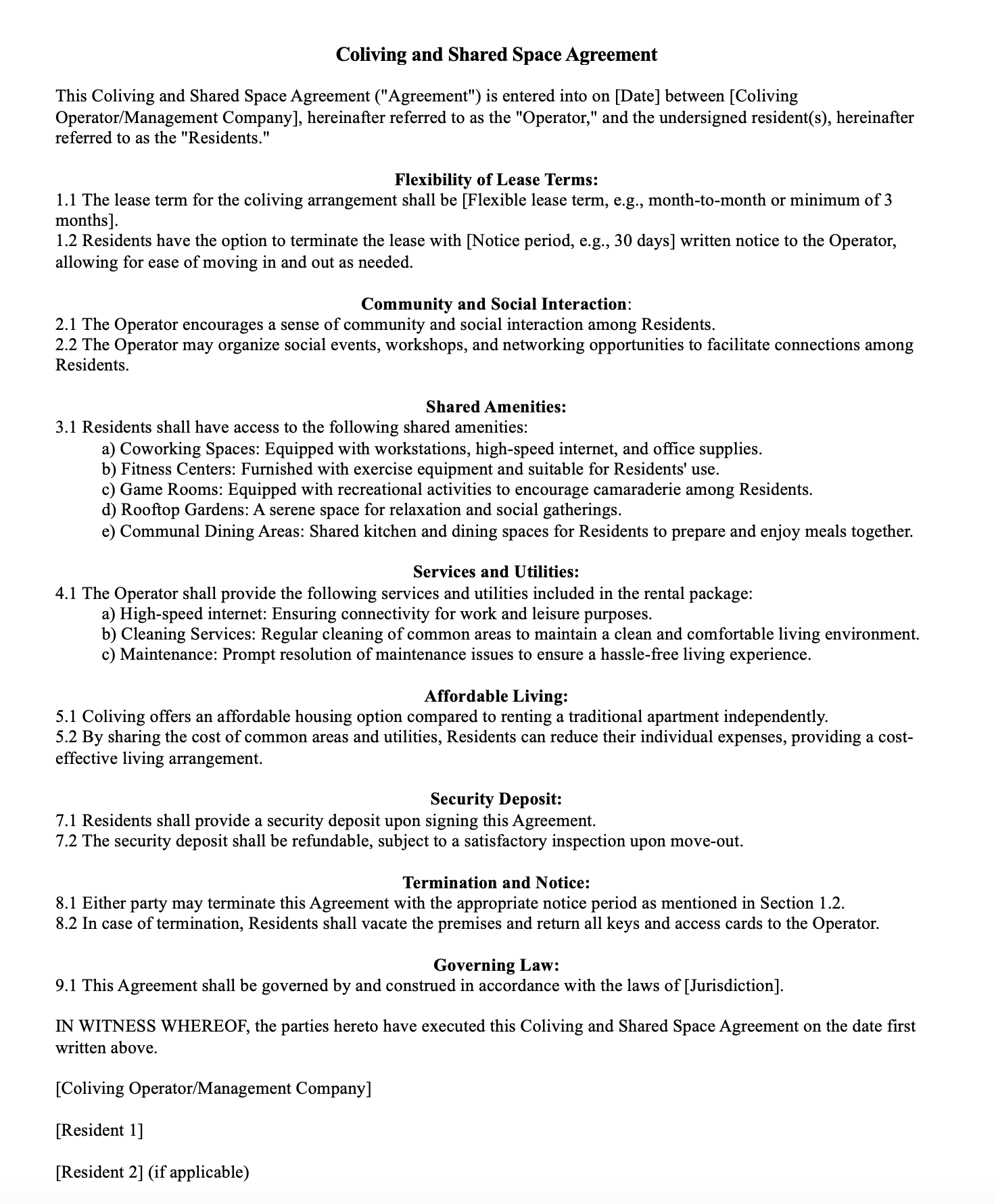Lets go take a look into the future.
This seminar series will contain four modules, starting with the past and finishing with the future of property. The body modules will contain leaseholds, as well as freeholds. So, check out the links below for more information.
Quick Guide
Sustainable & Green Building
7 Points to Focus On

Green Materials and Construction Practices: Eco-friendly materials, such as recycled content, sustainably harvested wood, and non-toxic paints, are favored in the construction of green buildings. Additionally, sustainable construction practices, such as reducing construction waste and reusing materials, are prioritized to minimize the environmental impact of the building process.
Indoor Air Quality: Green buildings pay close attention to indoor air quality by using materials and finishes that emit fewer pollutants and incorporating proper ventilation systems. Improved indoor air quality enhances the health and comfort of building occupants and can lead to increased productivity and well-being.
Energy Efficiency: Sustainable buildings employ various energy-efficient features, such as advanced insulation, high-performance windows, energy-efficient lighting, and HVAC systems. These measures aim to reduce energy consumption, lower utility bills for occupants, and decrease greenhouse gas emissions.
Renewable Energy Integration: Green buildings often incorporate renewable energy sources like solar panels, wind turbines, or geothermal systems to generate clean energy on-site. By generating their electricity, these buildings can reduce reliance on traditional energy grids and decrease their overall carbon footprint.
Water Conservation: Sustainable buildings implement water-efficient technologies such as low-flow plumbing fixtures, rainwater harvesting systems, and water-recycling mechanisms. These measures help reduce water consumption and contribute to overall water conservation efforts.
Government Incentives and Regulations: Many governments around the world are implementing policies to encourage sustainable construction and offer incentives such as tax breaks, grants, or expedited permitting for green building projects. On the other hand, some regions are enacting building codes and regulations that mandate certain energy efficiency and sustainability standards for new constructions.
Green Certifications
Green Certifications: Various green building certifications, such as LEED (Leadership in Energy and Environmental Design), BREEAM (Building Research Establishment Environmental Assessment Method), and Green Star, serve as benchmarks for sustainable building practices. These certifications provide third-party validation of a building’s environmental performance and can enhance its market value and appeal to environmentally-conscious tenants and buyers.
Leadership in Energy and Environmental Design (LEED)
Building Research Establishment Environmental Assessment Method (BREEAM)
Green Star
Smart Living
These are the 3 main points to focus on.

Smart Energy Management: Smart Living encourages energy efficiency by using smart energy management systems. These systems monitor energy usage, optimize heating and cooling, and automatically adjust power consumption to reduce energy waste and lower utility bills.
Smart Home Automation: Smart home automation involves the integration of various devices and appliances in a home, allowing residents to control them remotely through smartphones or voice-activated assistants like Amazon Alexa or Google Assistant. Users can manage lighting, thermostats, security cameras, door locks, and more, creating a seamless and personalized living environment.
Internet of Things (IoT) Ecosystems: The IoT refers to the interconnection of everyday objects through the internet, enabling them to collect and exchange data. In Smart Living, IoT ecosystems can include smart devices, wearables, home appliances, and even vehicles, all communicating with each other to provide personalized experiences and streamline daily tasks.
Co-living & Shared Spaces

Coliving is a modern housing arrangement where individuals, often strangers, live together in a shared space. Unlike traditional roommates, coliving spaces typically offer fully furnished private bedrooms with shared common areas such as kitchens, living rooms, and sometimes bathrooms. The residents share the responsibilities of maintaining the space and often participate in community events and activities.
Flexibility: Coliving arrangements often offer flexible lease terms, allowing residents to move in and out with ease. This flexibility caters to people who may not want to commit to a long-term lease or prefer a more transient lifestyle.
Community and Social Interaction: Coliving spaces foster a sense of community by encouraging social interactions among residents. Many coliving operators organize social events, workshops, and networking opportunities to facilitate connections among residents.
Shared Amenities: Residents typically have access to shared amenities, which could include coworking spaces, fitness centers, game rooms, rooftop gardens, and communal dining areas. These shared facilities enhance the overall living experience.
Services and Utilities: Coliving spaces often include services and utilities in the rental package. High-speed internet, cleaning services, and maintenance are common amenities offered to residents.
Affordable Living: Coliving can be a more affordable housing option compared to renting a traditional apartment on one’s own. By sharing the cost of common areas and utilities, residents can reduce their individual expenses.
Common Types of Shared Spaces
Coworking Spaces: Shared workspaces are becoming increasingly popular, offering freelancers, remote workers, and entrepreneurs a flexible and collaborative environment to work, network, and share resources.

Shared Laundry Facilities: Shared laundry rooms in apartment buildings or coliving spaces reduce the need for individual laundry appliances in each unit, saving space and energy.
Shared Playgrounds and Recreation Areas: In residential communities, shared playgrounds and recreation areas encourage social interaction among families and residents of all ages.
Shared Kitchens: In some housing complexes or coliving spaces, residents may share large communal kitchens. This fosters interaction and allows residents to save space in their private units, especially in micro-apartments or tiny houses.
Shared Kitchens: In some housing complexes or coliving spaces, residents may share large communal kitchens. This fosters interaction and allows residents to save space in their private units, especially in micro-apartments or tiny houses.
Shared Transportation: In urban areas, shared transportation services such as bike-sharing, car-sharing, or scooter-sharing programs promote sustainable mobility options and reduce the need for individual car ownership.
Remote Work Influence
Using Pros and Cons
Increased Demand for Suburban and Rural Properties:
- Remote work allows individuals to choose their preferred location, leading to a surge in demand for properties in suburban and rural areas.
- Homebuyers and renters seek larger living spaces, access to green spaces, and more affordable housing options outside of crowded urban centers.
Flexible Office Spaces and Coworking Solutions:
- With remote work reducing the need for traditional office spaces, there is a rise in demand for flexible office solutions like coworking spaces.
- Property owners and developers can adapt underutilized commercial spaces into shared work environments, generating new revenue streams.
Real Estate Technology Adoption:
- The remote work trend has accelerated the adoption of real estate technology, such as virtual property tours, 3D floor plans, and online document signing.
- Virtual tools enhance property marketing and ease the transaction process for both buyers and sellers.

Reduced Demand for Urban Commercial Real Estate:
- Remote work has diminished the need for proximity to central business districts (CBDs), leading to reduced demand for urban office spaces.
- This trend may result in higher office vacancies and decreased rental rates in CBDs.
Economic Impact on Urban Centers:
- A decline in foot traffic and business activity in urban centers due to remote work can negatively affect commercial property values and retail establishments.
- Reduced demand for office spaces may lead to economic challenges in cities heavily reliant on office-based industries.
Challenges in Building Community and Networking:
- Remote work can lead to social isolation for remote workers, potentially affecting the appeal of properties in vibrant, well-connected neighborhoods.
- The lack of face-to-face interactions may impact the sense of community and neighborly bonds in urban areas.
Urban Re-Development

Urban redevelopment, a.k.a. urban renewal or urban regeneration.
Urban redevelopment, also known as urban renewal or urban regeneration, refers to the process of revitalizing and transforming existing urban areas to improve their physical, economic, and social conditions. It involves the strategic redevelopment of underutilized or blighted areas in cities to create more sustainable, functional, and appealing spaces for residents, businesses, and visitors.
Revitalizing Existing Infrastructure: Urban redevelopment focuses on upgrading and modernizing existing buildings, streets, parks, and public spaces. This may include renovating old buildings, repurposing vacant properties, and improving transportation and utilities.
Mixed-Use Development: Redevelopment projects often emphasize mixed-use development, where a combination of residential, commercial, and recreational spaces are integrated within the same area. This approach encourages walkability, reduces urban sprawl, and creates vibrant, inclusive communities.
Economic Growth and Investment: Urban redevelopment aims to attract private and public investment to foster economic growth. By creating appealing urban environments, cities can attract businesses, entrepreneurs, and investors, which can lead to job creation and economic opportunities for residents.
Social and Cultural Enhancement: Redevelopment projects may include the preservation of historic landmarks and the promotion of cultural spaces and events. This enhances the social fabric of the community and fosters a sense of identity and pride among residents.
Affordable Housing: Some urban redevelopment initiatives include provisions for affordable housing to ensure that diverse socioeconomic groups can benefit from the improved living conditions and amenities.
Sustainable Development: Urban redevelopment often incorporates sustainable design and construction practices, such as green building standards, energy-efficient infrastructure, and renewable energy integration. This helps to minimize environmental impact and promote eco-friendly living.
Community Engagement: Successful urban redevelopment requires active community involvement and participation. Engaging residents, businesses, and local stakeholders in the planning and decision-making processes ensures that the redevelopment aligns with the needs and aspirations of the community.
Main Challenges
Gentrification: Urban redevelopment can lead to gentrification, where property values rise, and the cost of living increases, displacing lower-income residents from their neighborhoods.
Balancing Economic and Social Objectives: Striking a balance between economic development and social equity can be challenging, as some residents may be left out of the benefits of redevelopment.
Financial Constraints: Redevelopment projects often require significant financial investments from public and private sources, which may not always be readily available.
Infrastructure and Transportation Concerns: Urban redevelopment can put a strain on existing infrastructure and transportation systems, necessitating careful planning to ensure sustainability and efficiency.
Overall, urban redevelopment plays a crucial role in transforming cities to meet the evolving needs of their populations while promoting economic growth, social inclusion, and environmental sustainability.

Vocabulary Review

Make list.
Urban renewal: The process of revitalizing and transforming existing urban areas to improve their physical, economic, and social conditions.
Green building standards: Guidelines and criteria for constructing environmentally friendly and energy-efficient buildings, often incorporating renewable energy and resource-efficient practices.
Affordable housing: Residential properties or units that are priced within the financial means of low- and moderate-income individuals or families.
Sustainable development: Development that meets the needs of the present without compromising the ability of future generations to meet their own needs, considering environmental, social, and economic factors.
Blighted: An area that is in a state of decay or deterioration, often characterized by abandoned or neglected buildings and a decline in property values.
Repurposing: Converting or adapting a building or space for a different use or purpose from its original design or function.
Revitalizing: To renew or restore the vitality and energy of a place or area, often through redevelopment or renovation efforts.
Energy-efficient infrastructure: Infrastructure systems and facilities designed to minimize energy consumption and reduce environmental impact.
Mixed-use development: A real estate project that incorporates a mix of residential, commercial, and/or industrial spaces within the same area or building.
Walkability: The ease and convenience of walking within a neighborhood or urban area, typically characterized by pedestrian-friendly infrastructure and amenities.
Renewable energy integration: Incorporating sustainable and renewable energy sources like solar, wind, or geothermal power into urban infrastructure.
Community engagement: Involving residents, businesses, and stakeholders in the planning and decision-making processes related to urban renewal initiatives.
Urban sprawl: The uncontrolled expansion of urban areas into surrounding rural or undeveloped land, often leading to low-density, car-dependent communities.
Gentrification: The process of renovation and revitalization of an urban area, often attracting wealthier residents and leading to the displacement of lower-income communities.
Economic growth: The increase in the production and consumption of goods and services within an economy, leading to improved living standards and higher employment rates.
Social equity: Fairness and justice in the distribution of resources and opportunities within a society, including access to housing, education, and healthcare.
Inclusive communities: Neighborhoods and developments that are designed to accommodate people of diverse backgrounds and abilities, promoting social cohesion and diversity.
Planning: The process of designing and organizing urban spaces and activities to achieve specific goals and objectives for the community.
Financial constraints: Limitations or restrictions related to financial resources, often affecting the scale and scope of urban renewal projects.
Strain on existing infrastructure: Pressure or burden placed on the current infrastructure due to increased population or development demands.





